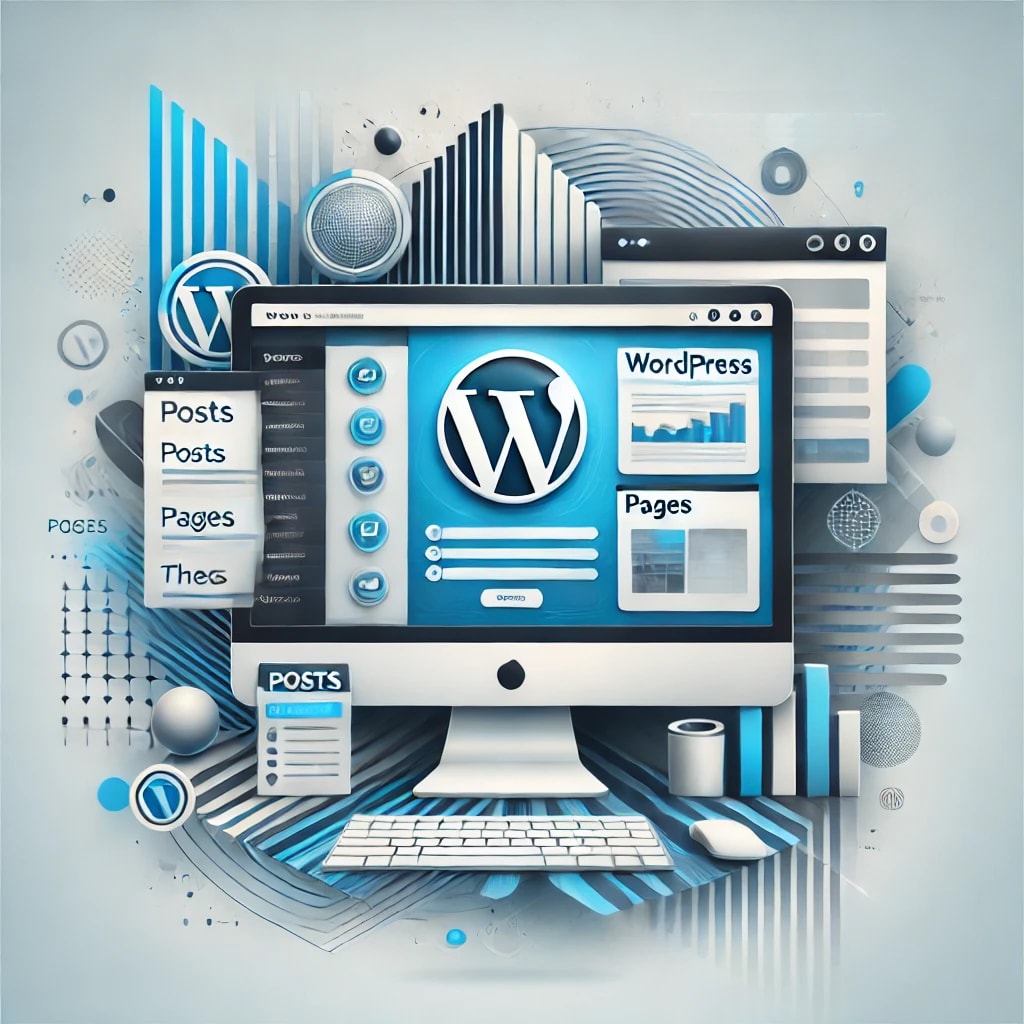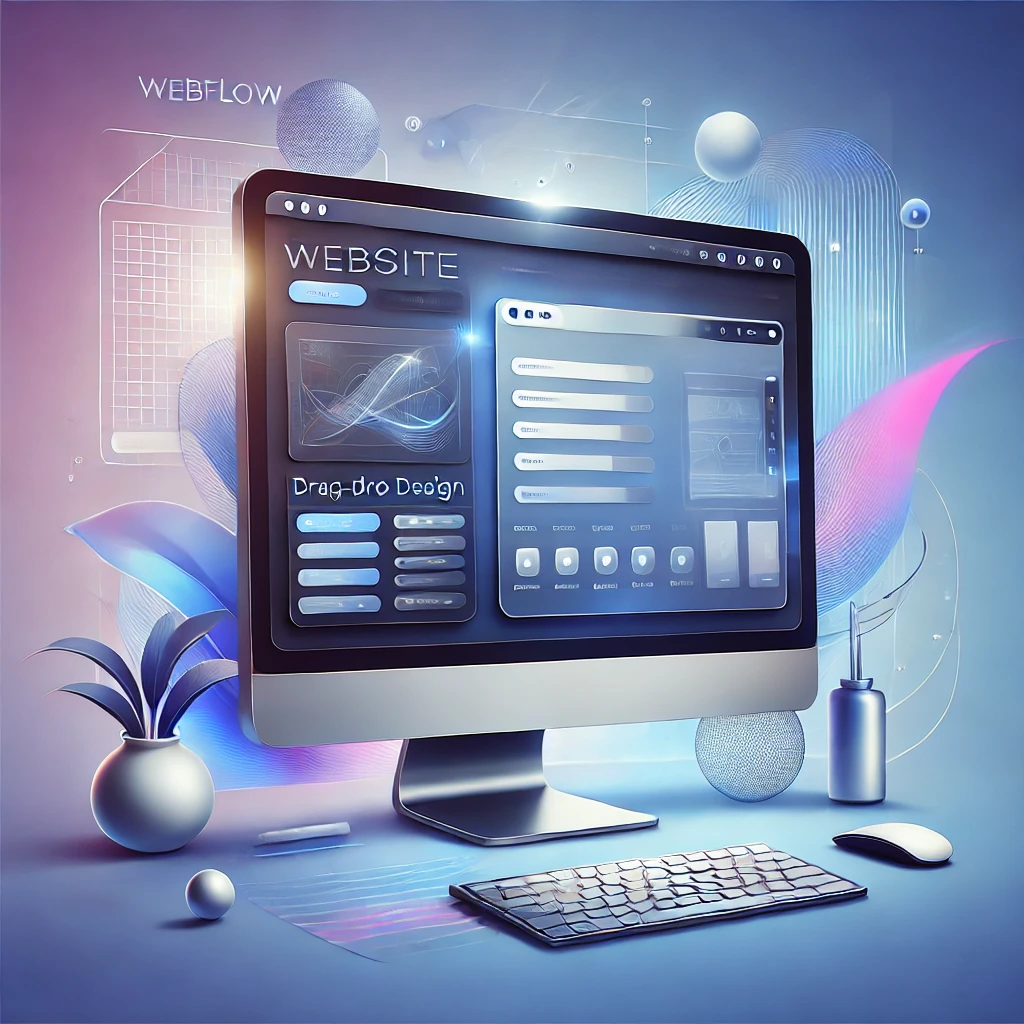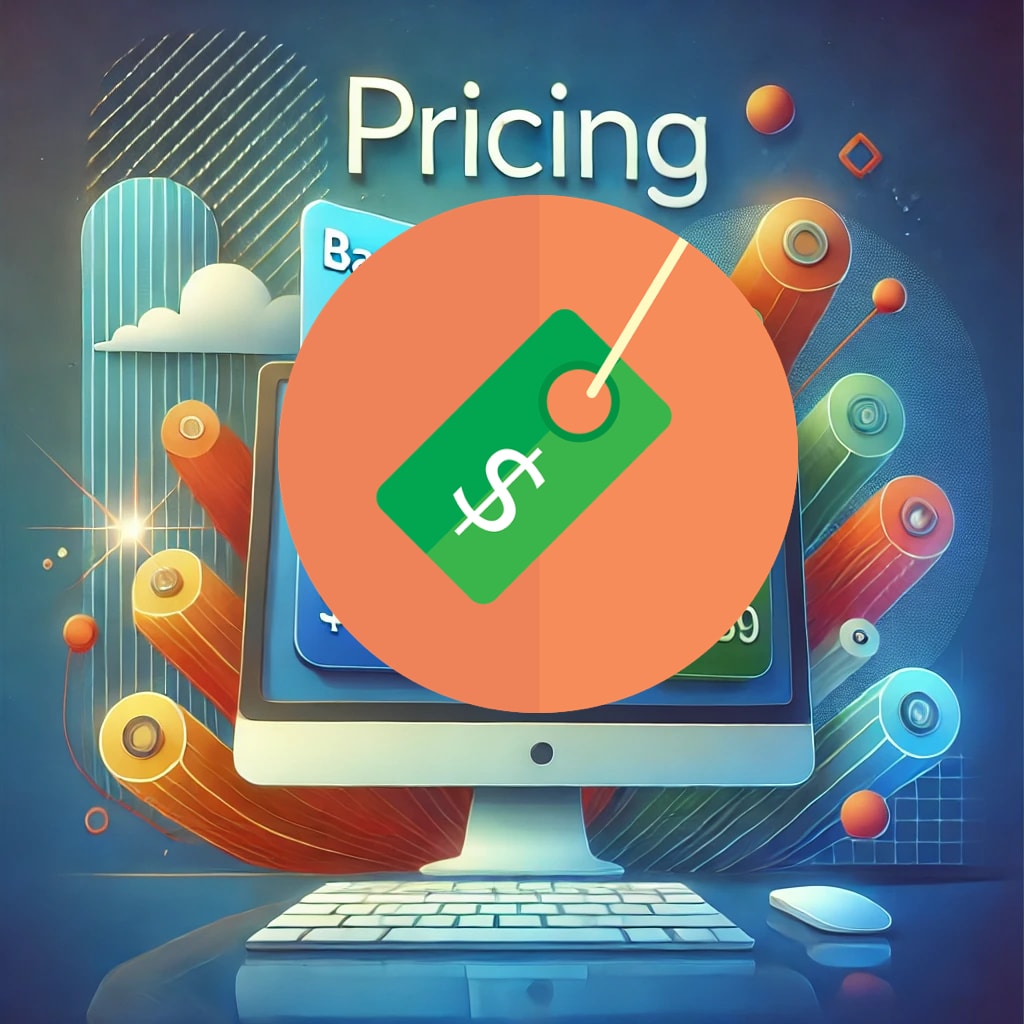

Webflow vs WordPress: Which Platform Best Suits Your Business Needs (2025 Guide)
Published on January 7, 2025
By Jaren Hidalgo · 12 minute read
Executive Summary
In today’s digital landscape, choosing the right platform for your website is more crucial than ever. As businesses navigate between traditional content management systems and modern visual development platforms, the Webflow vs WordPress debate has become increasingly relevant. At Kreante, where we’ve implemented both platforms for diverse client needs, we understand that this decision extends beyond feature comparisons – it’s about finding the right fit for your specific business goals, technical capabilities, and long-term scalability requirements. In this article, we’ll delve into the world of WordPress and Webflow, exploring their key features, pros, and cons, and helping you decide which platform is best suited for your needs.

What is WordPress?
WordPress is a free, open-source software that allows anyone to download and use it to create a website. Setting up and customizing a WordPress website involves selecting a hosting provider, installing WordPress, choosing a theme, and adding plugins to enhance functionality. With over 42% of all websites on the internet powered by WordPress, it’s clear that this platform is a favorite among web designers and developers. WordPress offers a range of features, including a content management system, blogging platform, and ecommerce functionality, making it an ideal choice for users who want complete control over their website’s functionality and design. Additionally, WordPress plugins enhance website functionality and integration, providing seamless solutions that alternatives like Webflow require workarounds and code snippets to achieve.

What is Webflow?
Webflow is a cloud-based, all-in-one software-as-a-service (SaaS) platform for building and hosting websites. Unlike WordPress, a Webflow site offers a range of features and tools for designing, building, and hosting, including integrations, pricing plans, and accessibility to non-developers. Webflow is known for its ease of use and visual design interface, making it an ideal choice for users who want a more straightforward and streamlined way to create a professional-looking website.

Key Features of Webflow and WordPress
Content Management System (CMS): Both WordPress and Webflow offer a CMS, allowing users to create, edit, and manage content on their website.
Blogging Platform: WordPress started as a blogging platform and has evolved into a full-service CMS. Webflow also offers blogging functionality, but it’s not as advanced as WordPress.
Ecommerce Functionality: Both platforms offer ecommerce functionality, allowing users to create an online store and sell products or services.
Customization Options: WordPress offers a wide range of customization options, including themes, plugins, and widgets. Webflow also offers customization options, but they’re not as extensive as WordPress.
Security: WordPress requires users to take additional security measures to protect their websites, while Webflow takes security seriously and provides a range of security features to protect its users.
SEO Capabilities: Both platforms offer SEO capabilities, but WordPress has a wider range of SEO plugins available, making it easier to optimize your website for search engines.
Third-Party Integrations: Webflow users can incorporate external tools by using embed code, such as embedding a HubSpot lead generation form into a Webflow site. This allows for greater flexibility despite Webflow's limited native integrations compared to WordPress.
Key Insights
WordPress dominates with a 43% market share and offers extensive customization through plugins but requires more maintenance
Webflow excels in design flexibility and modern development workflows offering superior design control with faster development cycles
Cost considerations vary significantly based on project scope and requirements
Security and maintenance requirements differ substantially between platforms
Performance metrics favor Webflow for speed and optimization
Each platform has distinct advantages for different business types and use cases
Both platforms are user-friendly and suitable for creating simple or complex websites, making them accessible to users with little to no technical expertise
Introduction: Understanding Modern Web Development Platforms
The evolution of web development has brought us to a crossroads where traditional content management systems like WordPress compete with visual development platforms like Webflow. This comprehensive guide will help you navigate this choice by examining every crucial aspect of both platforms, including their e-commerce site capabilities.
Why This Comparison Matters
In our experience at Kreante implementing both solutions, we’ve observed that the right platform choice can lead to:
40% faster development cycles
60% reduction in maintenance costs
Improved security posture
Better user experience metrics
Webflow's user-friendly design and various site plans make it an attractive option for non-developers.
WordPress's popularity and flexibility make it a reliable choice for many businesses, with a significant portion of websites online utilizing WordPress.
Features and Capabilities Webflow Features
Webflow is a cloud-based all-in-one SaaS product that offers a visual design interface and built-in features for building and hosting a Webflow site.
It provides a drag-and-drop builder, a content management system, and e-commerce functionality.
Webflow also offers a range of templates and design elements to help you customize your website.
With Webflow, you have complete control over the design and layout of your website, and you can make changes without needing to know how to code.
Detailed Platform Analysis Core Architecture and Technology WordPress Architecture
WordPress uses a PHP-based system for managing content.
It relies on a MySQL database to store data.
Functionality can be extended through plugins.
Design is implemented using themes.
It uses a server-side rendering method.
Webflow Architecture
Utilizes modern JavaScript frameworks.
Comes with a built-in design system.
Features a visual development environment.
Capable of generating static sites.
Operates on a cloud-based infrastructure.

Design and Development Capabilities WordPress Design Framework
Theme-based design approach: WordPress relies on themes to define the overall look and feel of a website, offering users a wide array of pre-designed templates that can be tailored to fit their specific needs.
Extensive template marketplace: WordPress boasts a vast marketplace filled with thousands of themes, allowing users to choose from a variety of designs to suit their website's purpose, whether it's a blog, business site, or e-commerce platform.
Page builder plugins available: WordPress offers various page builder plugins that enable users to create custom layouts using a drag-and-drop interface, making it easier to design pages without coding.
Custom CSS implementation: Users can further personalize their WordPress site by adding custom CSS, allowing for advanced styling and design tweaks beyond the default theme capabilities.
Widget-based customization: WordPress supports widgets, which are small modules that can be added to different areas of a site, such as sidebars or footers, to enhance functionality and display content like recent posts or social media feeds.
Design and customization capabilities of a WordPress site: The platform provides numerous options for users to modify and enhance their site's appearance and functionality, ensuring a unique online presence.
Popular Page Builders and WordPress Plugins
Elementor: A popular page builder plugin known for its extensive features and intuitive interface, allowing users to create complex page designs easily. However, it may slow down site performance and lead to code bloat if not managed properly.
Divi Builder: Offers full design flexibility with a wide range of customization options. While it provides powerful design tools, users may face lock-in concerns, meaning it's challenging to switch themes or builders without losing customizations.
Gutenberg: WordPress's native page builder that integrates seamlessly with the platform, providing a simple way to create and edit content. It is user-friendly but may lack some advanced features found in third-party builders.
Webflow Design System
Visual development environment with precise design control: Webflow provides a visual development environment that allows users to have complete control over the design process. This means you can customize every aspect of your website's appearance with precision, ensuring that the final product aligns perfectly with your vision. This is particularly beneficial for designers who want to achieve a specific look and feel without being constrained by preset templates.
Built-in responsive design capabilities: Webflow's platform inherently supports responsive design, which means your website will automatically adjust to look great on any device, whether it's a desktop, tablet, or smartphone. This feature eliminates the need for separate mobile versions and ensures a seamless user experience across all devices.
Professional-grade animations without custom coding: One of Webflow's standout features is its ability to create sophisticated animations and interactions without the need for custom code. This allows designers to enhance their websites with dynamic elements that engage users and improve the overall aesthetic, all while maintaining a professional quality.
Clean, structured code output: Unlike some other website builders, Webflow generates clean and structured code. This is important for maintaining website performance and ensuring that the site is easily readable by search engines, which can positively impact SEO efforts. The clean code also makes it easier for developers to make further customizations if needed.
Key Design Features
Flex and Grid Layout
Visual CSS Grid Implementation: This feature allows you to create complex and responsive layouts using a visual interface. It simplifies the process of designing a grid-based layout without writing code, making it accessible even for those without coding skills.
Flexbox Controls: Flexbox is a layout model that provides an efficient way to arrange elements within a container. With Webflow's Flexbox controls, you can easily align and distribute space among items in a container, ensuring a consistent and responsive design across different devices.
Responsive Breakpoints: These are predefined screen sizes that allow you to adjust the layout and design of your site for various devices, such as desktops, tablets, and mobile phones. This ensures your website looks great on any screen size.
Interactions 2.0
Advanced Animation Capabilities: This feature lets you create complex animations for your website elements, enhancing user engagement and visual appeal. You can animate elements based on user interactions, such as clicks or hovers, without needing to write custom code.
Scroll-based Triggers: These allow you to trigger animations or changes in your website's elements as users scroll through the page. It creates a dynamic experience that can highlight important content as users navigate your site.
Complex Multi-step Animations: This capability enables you to design intricate animations that involve multiple steps or stages, adding depth and sophistication to your website's visual effects.
Custom Components
Reusable Design Systems: This feature allows you to create components that can be reused throughout your website, ensuring consistency and saving time. You can update these components in one place, and the changes will automatically apply wherever they are used.
Global Styles: Global styles enable you to define a set of styles that apply across your entire website. This ensures uniformity in design elements like fonts, colors, and spacing, making it easier to maintain a cohesive look and feel.
Symbol Management: Symbols are reusable elements that can be used across different pages of your website. They allow for easy updates and consistency, as changes made to a symbol will reflect everywhere it is used.
Ease of Use and Accessibility
WordPress Ease of Use
WordPress is renowned for its user-friendly interface, making it a go-to choice for both beginners and seasoned web developers. The WordPress dashboard is designed with simplicity in mind, allowing users to effortlessly navigate through various features and tools. Whether you’re adding new content, customizing your site’s appearance, or installing plugins, the intuitive layout ensures that you can manage your website with ease.
One of the standout features of WordPress is its accessibility. The platform is built to accommodate users of all technical skill levels, providing a seamless experience even for those with limited web development knowledge. Additionally, WordPress is committed to inclusivity, offering robust support for screen readers and other assistive technologies. This makes it an excellent option for users with disabilities, ensuring that everyone can create and manage a website effectively.
Webflow Ease of Use
Webflow is designed to be user-friendly, making it easy for anyone to create a website without extensive coding knowledge. The platform offers a visual interface that allows users to drag and drop elements, simplifying the design and building process. Webflow also provides a range of tutorials and resources to help users get started, including a comprehensive guide to getting started with Webflow.
One of the key features that makes Webflow easy to use is its intuitive interface. The platform is designed to be easy to navigate, with a clear and simple layout that makes it easy to find the tools and features you need. Webflow also offers a range of pre-designed templates and design elements, making it easy to get started with your website design.
In addition to its user-friendly interface, Webflow also offers a range of features that make it easy to use, including:
A visual site builder that allows you to create and customize your website without coding
A range of pre-designed templates and design elements to help you get started with your website design
A comprehensive guide to getting started with Webflow, including tutorials and resources
A user-friendly interface that makes it easy to navigate and find the tools and features you need
Overall, Webflow is designed to be easy to use, making it a great option for anyone who wants to create a website without extensive coding knowledge.
Themes and Templates
WordPress Themes for Customization
When it comes to customization, WordPress themes offer unparalleled flexibility. With thousands of themes available, users can easily find one that matches their vision, whether they’re building a simple blog or a complex e-commerce site. Each theme comes with its own set of features and design elements, allowing for extensive personalization to meet specific needs.
The beauty of WordPress themes lies in their adaptability. Users can modify everything from the layout to the color scheme, ensuring that their website stands out. For those running an e-commerce site, there are specialized themes designed to enhance online shopping experiences, complete with built-in features for product displays and checkout processes. This versatility makes WordPress themes a powerful tool for creating a unique and functional website tailored to your business goals.
Webflow Templates for Quick Starts
Webflow offers a range of pre-designed templates that make it easy to get started with your website design. These templates are designed to be customizable, allowing you to easily add your own content and make changes to the design. Webflow templates are also responsive, meaning they will look great on any device, from desktops to mobile phones.
Webflow templates are organized into categories, making it easy to find the perfect template for your website. Some of the categories include:
Business: Templates designed for businesses, including corporate websites and e-commerce sites
Blog: Templates designed for bloggers, including personal blogs and news sites
Portfolio: Templates designed for creatives, including photographers and designers
E-commerce: Templates designed for online stores, including product pages and shopping carts
In addition to its pre-designed templates, Webflow also offers a range of design elements, including:
Pre-designed layouts and grids
Customizable typography and color schemes
Responsive design elements, including images and videos
Overall, Webflow templates and design elements make it easy to get started with your website design, and can help you create a professional-looking website in no time.
Ecommerce Functionality

Both WordPress and Webflow offer e-commerce functionality, making it easy to create an online store and sell products or services. However, the two platforms have some key differences when it comes to e-commerce.
Building an E-commerce WordPress Site
Building an e-commerce WordPress site requires the use of a plugin, such as WooCommerce. WooCommerce is a popular e-commerce plugin that offers a range of features, including:
Product management: Easily add and manage products, including descriptions, prices, and images
Shopping cart: Allow customers to add products to a shopping cart and checkout
Payment gateways: Integrate with popular payment gateways, including PayPal and Stripe
Shipping integration: Integrate with shipping providers, including USPS and UPS
To build an e-commerce WordPress site, you will need to:
Install and activate the WooCommerce plugin
Set up your store’s settings, including payment gateways and shipping options
Add products to your store, including descriptions, prices, and images
Customize your store’s design, including the layout and typography
Real-World Applications
When to Choose Webflow
Design-focused projects requiring pixel-perfect implementation
Projects needing built-in CMS without complex customizations
Agencies and freelancers looking for efficient workflows
Startups requiring quick deployment with professional results
When to Choose WordPress
Content-heavy websites with multiple contributors
Projects requiring extensive third-party integrations
E-commerce sites with complex product structures
Websites needing multilingual capabilities
Marketing teams benefit from WordPress due to its unrestricted user access, allowing multiple writers to collaborate seamlessly. Additionally, specific SEO tools within WordPress are tailored to support marketers, enhancing overall content quality and SEO performance. WordPress's collaborative features make it an ideal choice for a marketing team, enabling efficient and seamless content creation and management.
Pricing, Web Hosting, and Security

The core open-source WordPress software is 100% free, but you’ll need to pay for web hosting and potentially premium plugins and themes.
Webflow lets you sign up and build your website for free, but you’ll need to sign up for a paid plan when you want to make your website live and accessible to other people.
WordPress is a popular open-source software, making it a target for hackers, but users can take additional security measures, such as using security plugins and services.
Webflow takes security seriously and offers built-in security features, including SSL certificates and performance optimization.
Cost Analysis Webflow Pricing Structure
Site plans: $12-$212/month
E-commerce plans: Starting at $29/month
Enterprise solutions: Custom pricing
One-time design cost considerations
No maintenance fees
WordPress Pricing Considerations
Hosting costs: $5-$50/month. While WordPress itself is free, users must pay for web hosting services. Different web hosts offer varying levels of support and tools for installing WordPress, which can influence the ease of the setup process.
Premium themes: $30-$100
Essential plugins: $0-$200/year
Maintenance costs: Variable
Development costs: Based on customization needs
Performance and Security
Webflow
Managed infrastructure
Built-in SSL security features
DDoS protection
Automatic updates, backups and maintenance
Global CDN included
WordPress
Security dependent on hosting and maintenance
Regular updates required
Performance varies based on configuration
Additional security measures often needed
Optimization and SEO Capabilities
Both WordPress and Webflow offer excellent SEO results, but Webflow’s code generation is generally cleaner and more structured.
WordPress requires the use of plugins to manage and improve meta-descriptions and open graph settings, while Webflow offers these features natively.
With WordPress, you can use SEO plugins to optimize your website for search engines, while with Webflow, you can use its built-in SEO capabilities to optimize your website.
Expert Analysis from Kreante
Based on our experience implementing both platforms, we’ve observed that Webflow typically excels for businesses prioritizing design quality and requiring minimal maintenance. WordPress remains powerful for content-heavy sites needing extensive customization. The choice often depends on your team’s technical capabilities and long-term maintenance preferences.

Case Studies
Webflow Success Story
A fashion retailer switched from WordPress to Webflow, resulting in:
40% faster page load times
25% increase in mobile conversions
Reduced maintenance costs by 60%
WordPress Success Story
A media company chose WordPress for its content platform, achieving:
Seamless integration with existing systems and optimized performance for WordPress sites
200% increase in content production efficiency
Simplified multi-user management, although collaboration on WordPress sites lacks certain streamlined functionalities compared to other platforms like Webflow
Making the Right Choice for Your Business, Consider These Factors:
Budget constraints and long-term costs
Technical expertise available
Content management needs
Design requirements
Scalability expectations
Conclusion
The choice between Webflow and WordPress ultimately depends on your specific business needs, technical requirements, and long-term goals. Through our experience at Kreante, we’ve found that:
WordPress excels for content-heavy sites requiring extensive customization
Webflow shines for design-focused projects needing rapid deployment
Cost considerations favor WordPress for simple sites
Maintenance requirements favor Webflow for reduced overhead
Next Steps
Assess your project requirements
Evaluate your technical capabilities
Consider your long-term maintenance resources
Schedule a consultation for personalized guidance

Need help deciding between Webflow and WordPress? Contact us for a personalized assessment and explore our blogs about No-Code / Low-Code updates.










